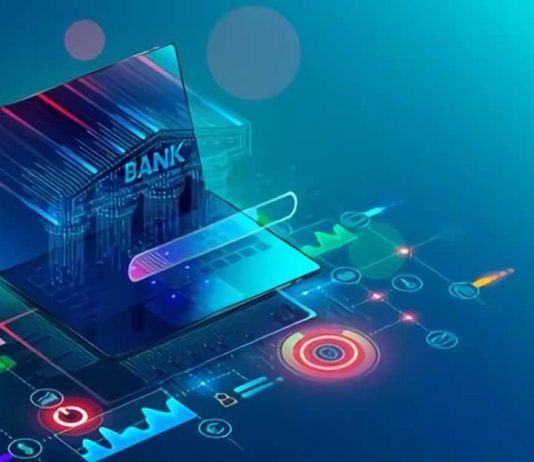Digital banking transformation refers to the comprehensive evolution of traditional banking services, leveraging advanced technologies to enhance operational efficiency, customer experiences, and service delivery. It encompasses the integration of digital technologies, data analytics, AI, and innovative strategies to modernize banking practices.
Digital banking transformation responds to the evolving needs and expectations of consumers, offering seamless, convenient, and personalized banking experiences. This paradigm shift not only streamlines internal operations for financial institutions but also empowers customers with unprecedented accessibility and control over their finances.
Contents
Traditional Banking vs. Digital Transformation
Traditional banking operated within physical branches, relying on face-to-face interactions and paper-based transactions. However, the emergence of digital transformation revolutionized this landscape, introducing a paradigm shift from brick-and-mortar establishments to virtual banking experiences.
In the past, banking transactions were limited by geographical constraints, necessitating physical presence. Yet, the advent of digital transformation dismantled these barriers with a software product development company, enabling seamless transactions through online portals, mobile apps, and ATMs. This shift not only transformed the mode of operation but also redefined customer expectations, prioritizing convenience, speed, and accessibility.
Technological advancements have fundamentally reshaped banking practices:
- Enhanced Accessibility: Customers now access banking services 24/7 from any location, fostering convenience and inclusivity.
- Personalized Experiences: Advanced analytics and AI enable banks to tailor services to individual preferences, improving customer satisfaction.
- Operational Efficiency: Automation streamlines processes, reducing manual errors and operational costs.
- Security Enhancements: Sophisticated cybersecurity measures are implemented to safeguard customer data in the face of evolving threats.
- Ecosystem Expansion: Collaborations between traditional banks and fintech firms broaden service offerings, fostering a holistic financial ecosystem
Key Drivers of Digital Banking Transformation
The banking industry has undergone a profound transformation driven by groundbreaking technological innovations
- AI and Machine Learning: These technologies power personalized recommendations, risk assessment, fraud detection, and process automation, optimizing operations and customer experiences.
- Big Data Analytics: Banks harness vast amounts of data to gain insights into customer behavior, preferences, and market trends, enabling tailored services and informed decision-making.
- Blockchain Technology: Its decentralized nature enhances security, transparency, and efficiency in transactions, driving innovations in payment systems and beyond.
- Internet of Things (IoT): IoT devices enable interconnected banking experiences, from smart ATMs to wearable payment devices, enhancing convenience and accessibility.
Regulatory and compliance factors play a significant role in shaping digital banking transformation:
- Regulatory Frameworks: Evolving regulations aim to balance innovation with consumer protection, necessitating banks to adapt swiftly to compliance requirements.
- Data Privacy Laws: Stricter data protection laws demand secure handling of customer data, prompting banks to invest in robust cybersecurity measures.
- Open Banking Initiatives: Regulatory mandates for open banking foster collaboration and data sharing between banks and third-party providers, encouraging innovation and competition.
- Global Standards and Guidelines: Adherence to global standards and guidelines ensures interoperability and security in an increasingly interconnected financial landscape.
Core Components of Digital Banking Transformation
- Risk Assessment and Fraud Detection: AI algorithms analyze patterns and detect anomalies in transactions, enhancing security measures and mitigating fraud risks.
- Personalized Customer Experiences: ML models analyze customer data to offer tailored product recommendations and personalized services.
- Process Automation: AI-driven automation streamlines routine tasks, reducing manual effort and improving operational efficiency.
- Robust Authentication Mechanisms: Implementation of multi-factor authentication and biometric security measures fortify access controls.
- Continuous Monitoring and Threat Detection: Advanced cybersecurity tools continuously monitor networks and systems for potential threats, enabling proactive mitigation.
- Employee Training and Awareness: Educating staff on cybersecurity best practices mitigates human error vulnerabilities.
Benefits and Opportunities
Improved Customer Experiences and Personalized Services
Digital banking transformation yields significant advantages in customer interactions:
- Tailored Services: Advanced analytics enable banks to understand individual customer needs, offering personalized financial products and services.
- Convenient Access: Seamless digital platforms provide customers with anytime, anywhere access to banking services, enhancing convenience.
- Enhanced Engagement: Interactive interfaces and personalized communication channels foster stronger relationships between banks and customers.
Enhanced Operational Efficiency and Cost Savings
Efficiency gains are a hallmark of digital banking transformation:
- Streamlined Processes: Automation and digitization reduce manual intervention, speeding up processes and minimizing errors.
- Cost Reduction: Reduced operational costs through automation and optimized resource utilization contribute to overall savings.
- Agile Decision-Making: Access to real-time data and analytics empowers banks to make data-driven decisions swiftly.
Conclusion
The industry will continue to evolve, integrating emerging technologies, responding to changing consumer needs, and navigating regulatory landscapes. Collaboration among banks, fintech firms, and non-banking entities will fuel innovation and ecosystem expansion.
As digital banking continues to transform the financial landscape, embracing innovation, prioritizing security, and aligning with evolving consumer expectations will be key in staying ahead in this dynamic and competitive industry. The future promises an era of interconnected, personalized, and technologically advanced banking experiences for all.


